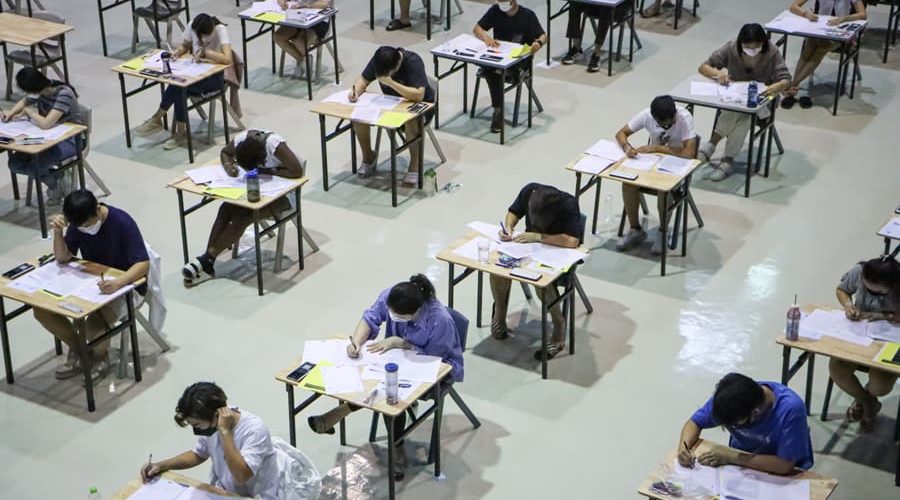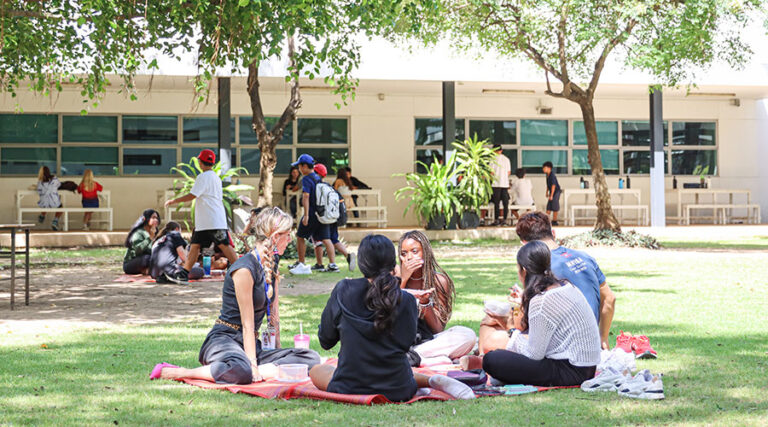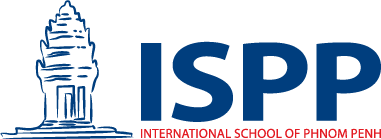IB Diploma Programme participation rates
In July each year, the International Baccalaureate (IB) publishes its Diploma Programme (DP) outcomes for students all over the world, based on the May exam session. Then, very shortly after (hours in some cases), schools and educational organisations publish highlights to celebrate the achievements of their graduating class. Then, when the information becomes available, the typically noted statistics are juxtaposed with global average equivalents.

What is usually talked about
Typically, schools share these statistics:
- Average score – the average points (out of 45) that students taking the full diploma achieved
- Pass rate – the number of students taking the full diploma who achieved the passing requirements
- Top score – what the highest scoring student/s in the cohort achieved
- Percentage (or number) of students that achieved at/above:
- 40 points – a standard that has been globally adopted as a high-achieving boundary marker
- 36 – a common total point score required by more selective universities globally
- 31 – the historical approximate global average
- Average subject score out of 7 – sometimes given per subject but more often as an overarching average across subjects.
Carli Allan recently published an article on whichschooladvisor.com called “How To Uncover a School’s ‘True’ IB Results”. In this article, Allan states that
There is a reason why the numbers matter – they demonstrate transparency, offer an opportunity to reward schools that do well and to encourage improvement. They provide parents with, hopefully, objective information on which to make the vital decision of which school is best for their child.”
There is so much that is problematic and misleading for readers about this statement and we should question: do numbers mean transparency? Do IBDP results indicate that a school is doing well? Do they even indicate a need to improve, or encourage improvement? And finally, should families make a decision on which school to choose for their child based on IBDP results?
Allan does go on to state that “raw figures offer a partial view” before delving a little deeper in her article. Hopefully, I can share more insight into considerations when looking at a school through the lens of IBDP results only.
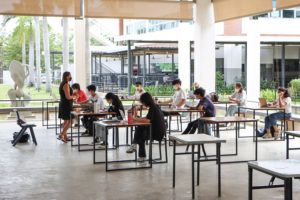
What is less commonly discussed
Allan’s article warns readers to look out for the “finessing” of data and aspects such as removal of students (usually those that fail) from data sets or rounding of decimalised numbers (up, of course). However, there are other ways in which IBDP information is portrayed that goes much deeper into the philosophy and beliefs of schools and educational institutions. I’ve outlined a couple of these considerations below:
Who takes part in the IBDP and how is this decided (participation rate)
The IBDP is not intended to be a specialist or elite academic pathway and the Director General of the International Baccalaureate Organisation, Olli-Pekka Heinonen, recently stated that he is committed to “bringing down the barriers” that are in place. This comment may not be specifically aimed at the IBDP, but participation in the programme is certainly something that is not always made available to every student that wants to pursue it.
It is not uncommon for schools to have extremely strict entrance and continuation requirements for participation in the IBDP. Students may not enter the programme unless they have demonstrated the capacity to perform strongly or progress rapidly. Very often, the requirements that are set for students are well beyond the passing requirements. Efforts are made to ensure that students will get to the end of the IBDP with little or no risk of failing. This leads to students that may have passed, never actually having the chance to find out.
At first, this may seem like a noble cause and intended to support and protect students, but this is very often not the case and is merely a way of safeguarding a school’s legacy (or goal) of a 100% pass rate (see bullet two from the list above) or to boost average scores (every other bullet in the list). There is a line (not a particularly fine one) between excluding students that have a genuine chance of achieving the full diploma and ensuring that students are pursuing an educational pathway that is challenging but realistic for them. There may be a chance that a student misses the final requirements to pass but, in some cases, allowing them to run that race and fight their fight is absolutely necessary.
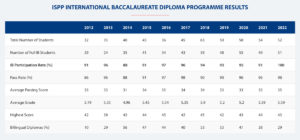
Less quantifiable achievements of students
When the IBDP results are published, the educational world seems to slip into an empirical mindset in which numerical data is all that can possibly be used to define the quality of IBDP experience and student achievement. The IB is about students making a difference and changing the world for the better; the numerical outcome of a student does little to demonstrate their capacity to change the world.
Sadly, when you punch into a web search engine Best IB schools in the world, the very first responses all relate to the IBDP final grades. This perpetuates the commitment of some schools to the data-driven approach chasing the title of The Best IB Diploma Programme in the World. The title of Best IB School In The World should be something that we all shudder at the sound of. We should be aspiring to provide students with their fondest memories, most rewarding experiences, greatest accomplishments and help them to shape their sense of self; none of which can be viewed numerically.
The IB offers no ranking of schools, does not use student scores as part of any evaluation and has never said that the quality of a programme is measured by the outcomes of students. At the core of all four of the IB programmes is the Learner Profile. Alongside the Learner Profile, close to the heart (core) of all four programmes, is service. These things are unquantifiable in real terms but they are part of what makes the difference in the development of an IB graduate. The Approaches To Learning are the aspects of our young people that help to future-proof them for the world and ensure that they develop the capacity to continue to learn well beyond school.
The things noted above cannot be measured, marked, ranked and filed in the same way that exam results are. Instead, you can look at how schools are dedicating time, resources, energy and attention to them. They can never really be perfected, so schools must model the reflective, ongoing learning process that we want in students. We must continuously strive to enhance and improve the ways in which we address the mission of the IB and how we help to develop young people into caring, communicative, knowledgeable and integrity-driven action takers.

Something to look out for
Next time you’re reviewing published IBDP outcomes, articles celebrating best school accolades or marketing materials promoting schools and organisations, you might want to take a leaf out of the book of any accomplished IB student and consider the information with a critical eye.
However, it is not always easy to find the participation rate of schools or total cohort size against registered IBDP students. Taking one country as an example, the “top-ranked” three schools in the country all have average scores of 40-43 points. The lowest participation rate of these three schools is approximately 18.6%; that is, only 13 students from a cohort of approximately 70 students registered for the full IBDP; the highest participation rate from these three schools is around 44%.
In comparison, the International School of Brussels (ISB) opens up the results page of their website with the caption below:
We are incredibly proud of our long history of academic success at ISB. This is particularly impressive considering that we are a non-selective school and the language of instruction is not the first language of many of our students. Students of every ability are supported to do the very best that they can and we are equally proud of all of our wonderfully diverse students.”
ISB then goes on to acknowledge a typical participation rate of approximately 85% before then acknowledging the usual pass rate and average scores, all of which are equally impressive.
When considering everything that has been noted in this article, maybe think about what message is being conveyed by a school in its approach to the IBDP. I would argue that when a school places grades, school averages and rates of success as a priority, it views participation in the IBDP as a means to gain a qualification. Alternatively, when a school truly embraces the value of an IBDP education, a young person is not in the programme to pursue a qualification; they are in the programme to grow, develop as a thinker and become a better person as a result of their learning, collaboration and engagements with their peers and the adults in the school.
Lee Hole
Secondary School Principal
References
Allan, C. (2022). How To Uncover a School’s ‘True’ IB Results. Whichschooladvisor [accessed 2022 Aug 29].
Heinonen, O-P. (2022). Past, present, future: the IB is a leading edge in a changing world. IBO. [accessed 2022 August 24].
